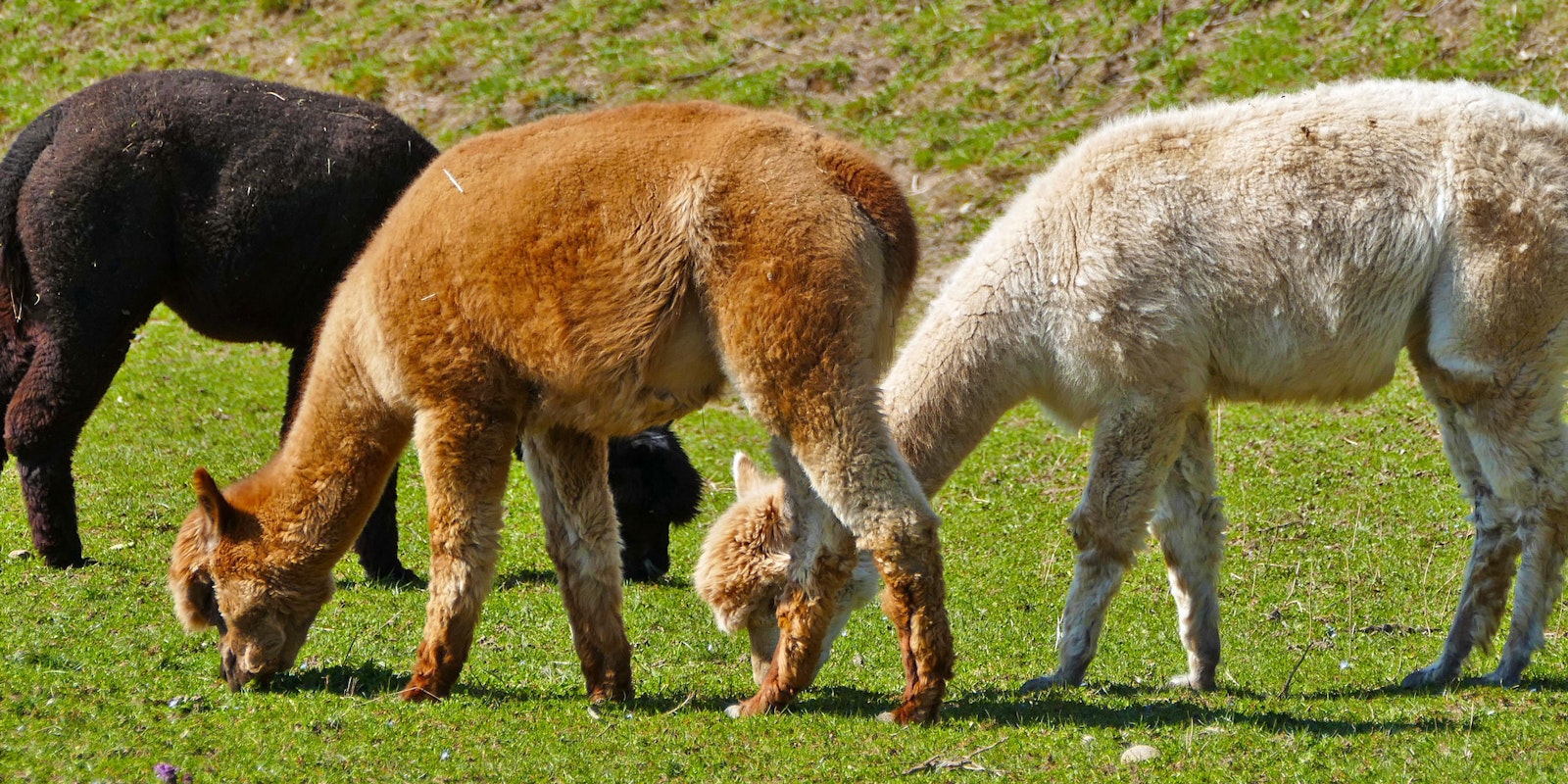From coffee-brown fawns to elegant rose greys and every shade in between, alpaca’s natural colors can brighten up any knitter’s project without a hint of dye. The Alpaca Owners Association, Inc. (AOA), the world’s largest alpaca association, recognizes 16 natural colors, plus six additional color classes for alpacas whose fleeces don’t quite fall into the standard color categories.
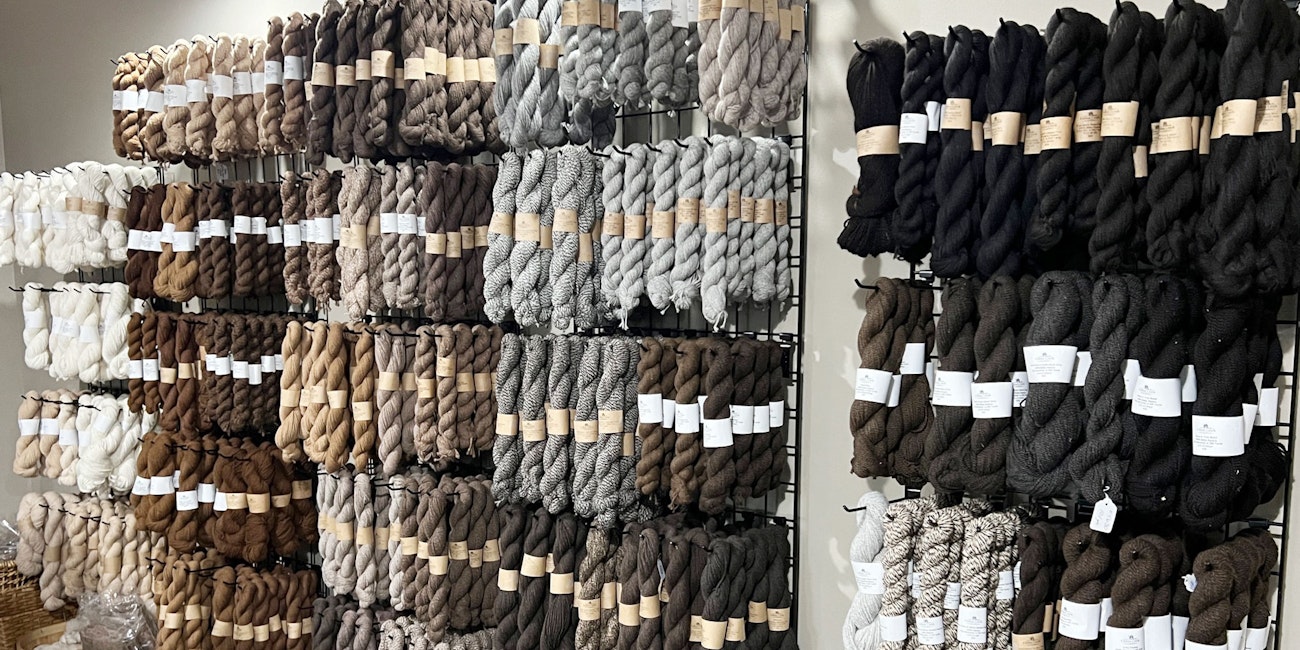 With 16 colors plus six color classes, the natural colors could fill a yarn store. Photo by Cotton Creek Alpacas
With 16 colors plus six color classes, the natural colors could fill a yarn store. Photo by Cotton Creek Alpacas
Colors, Colors, Colors!
At first glance, sixteen colors may seem a little daunting, but this bounty gives knitters a huge color palette from which to choose. Here are the colors organized in groups, with shades from lightest to darkest:
 Top row: A white alpaca and a pair of fawn alpacas. Bottom row: Medium fawn, light fawn, and beige fleeces, close-up. Photos by Cotton Creek Alpacas
Top row: A white alpaca and a pair of fawn alpacas. Bottom row: Medium fawn, light fawn, and beige fleeces, close-up. Photos by Cotton Creek Alpacas
White, Beige, Light Fawn, Medium Fawn, Dark Fawn
When it comes to alpaca, white is snowy or cloud-like, with noticeable luster. Beige is mainly white with just a touch of caramel. The fawns start with the lightest golden browns and end with darker shades akin to burnt cinnamon toast.
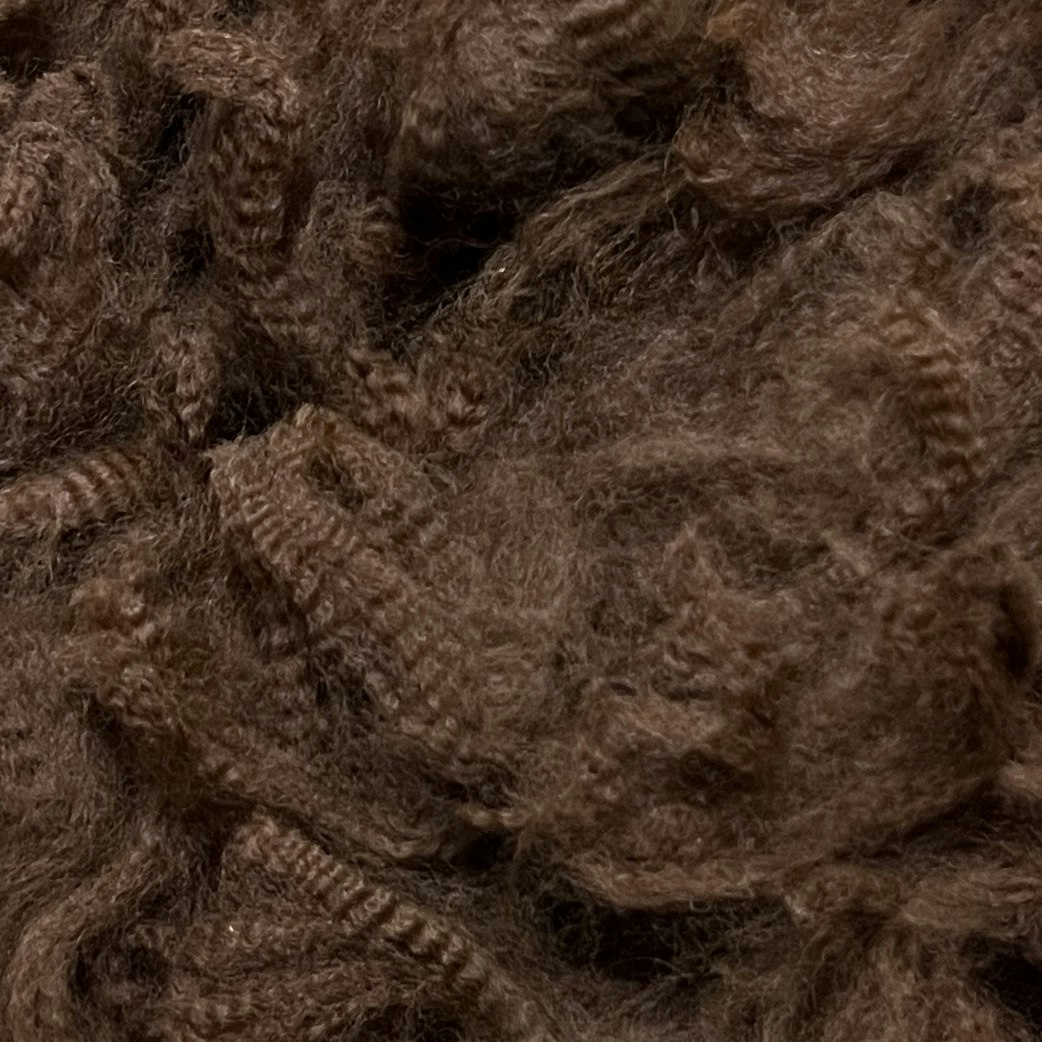 This crimpy fleece is classified as dark brown. Photo by Cotton Creek Alpacas
This crimpy fleece is classified as dark brown. Photo by Cotton Creek Alpacas
Light Brown, Medium Brown, Dark Brown
Light brown is more auburn in color and can sometimes feature reddish-copper highlights. Medium brown is a classic brown, while dark brown has black undertones.
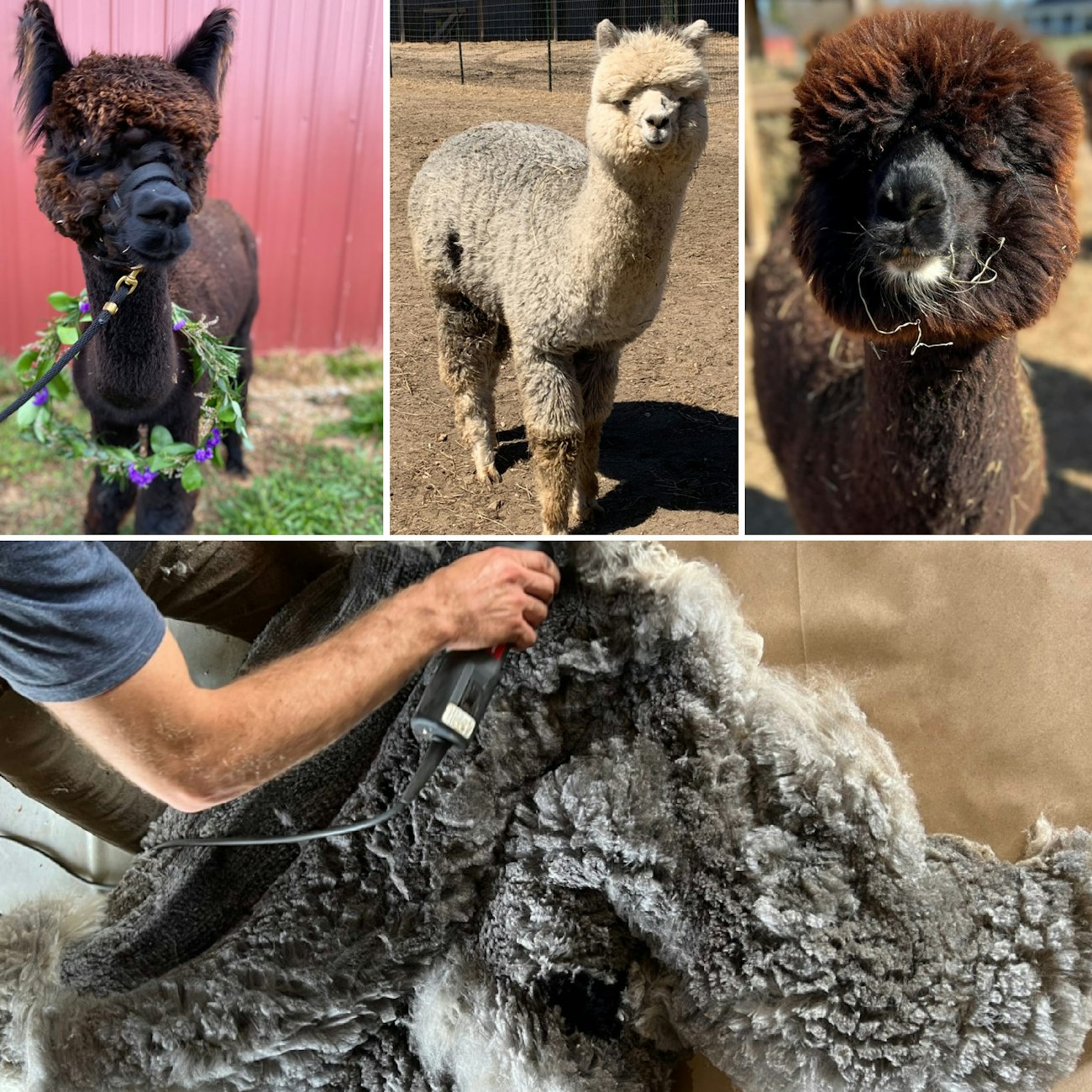 Clockwise from top left, a true black alpaca, a medium silver gray and white alpaca, a bay black alpaca, and a medium silver gray alpaca mid-shearing.
Clockwise from top left, a true black alpaca, a medium silver gray and white alpaca, a bay black alpaca, and a medium silver gray alpaca mid-shearing.
Bay Black, True Black, Light Silver Grey, Medium Silver Grey, Dark Silver Grey
Interestingly, bay black is a combination of black with reddish-brown highlights. True black is the purest black imaginable, with no white fibers. Silver grey is white with black undertones, like salt and pepper mixed together. Medium grey is reminiscent of chinchilla fur; the black fibers are noticeable, with pops of white throughout. Dark silver grey is primarily black with a few white fibers sprinkled in.
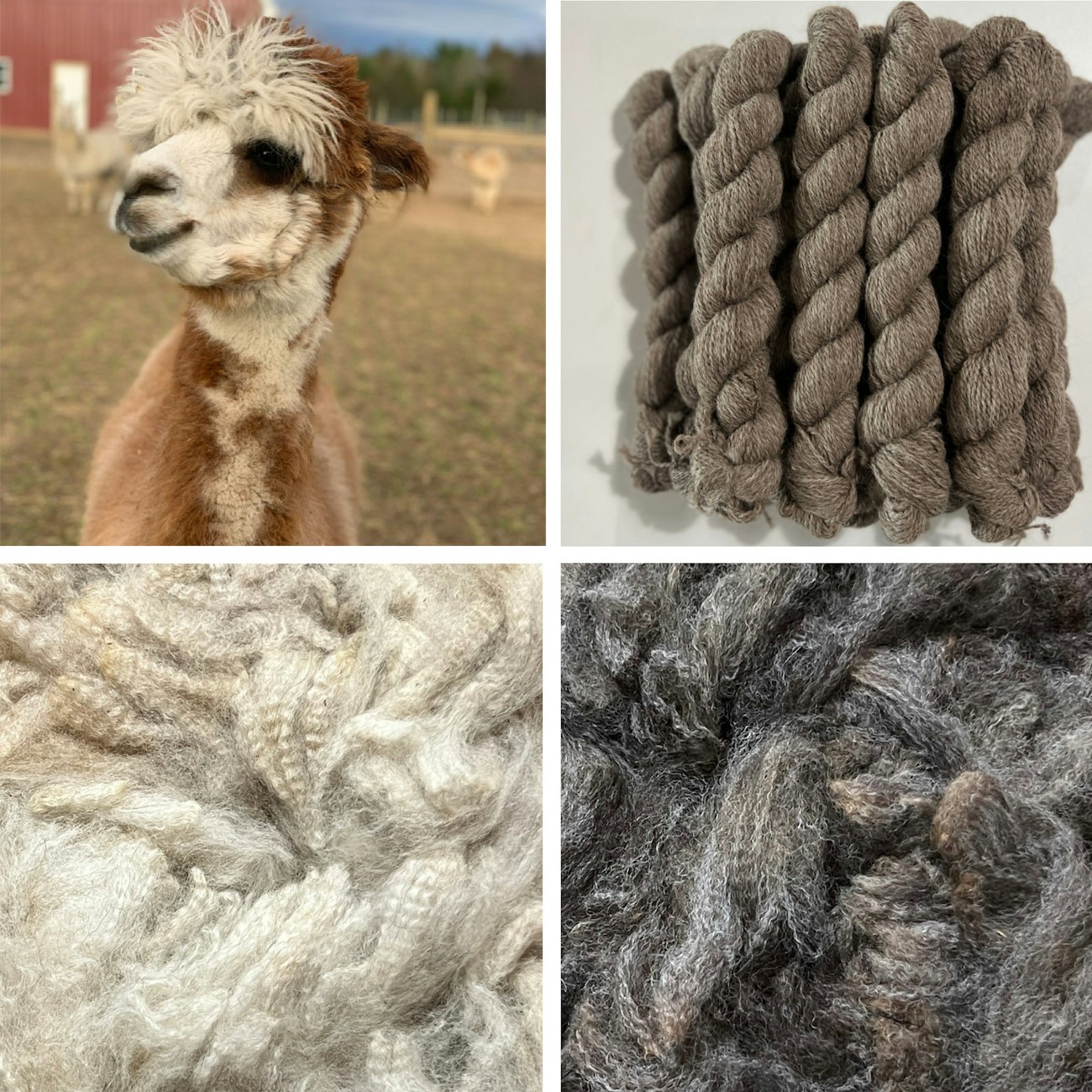 Clockwise from top left, Athena Rose, a medium rose grey; medium rose grey yarn; dark rose gray fleece; and light rose gray fleece. Photos by Cotton Creek Alpacas
Clockwise from top left, Athena Rose, a medium rose grey; medium rose grey yarn; dark rose gray fleece; and light rose gray fleece. Photos by Cotton Creek Alpacas
Light Rose Grey, Medium Rose Grey, Dark Rose Grey
Light rose grey is basically a light fawn fleece with white, grey, and sometimes black highlights. The same applies to medium and dark rose grey, which are fawn fleeces with the number of brown and grey fibers getting progressively heavier as the shade becomes darker. When fawn, brown, white, grey, and occasionally black fibers blend together, it makes for a uniquely beautiful color combination. A typical rose grey alpaca yarn will appear to be dark grey blended with tawny brown undertones.
What is Rose Grey?
Rose grey is a rather mysterious color category, with a name unlike any other natural fiber. I asked alpaca fiber expert Wini Labrecque about this complex color. Wini is a Certified Camelid Fiber Grader/Sorter/Classer through Olds College in Canada and an AOA Certified Alpaca Fleece Judge. She professionally evaluates fibers from camelid to cashmere, and there is no better person to ask for help with explaining rose grey.
She explains:
“According to the AOA Show Rules, rose grey is a reasonably uniform distribution of brown with white and grey fiber, which may or may not have black fibers present. As a fiber sorter/grader, I agree with this definition, making the distinction that there must be white or grey fibers as well as brown present. When looking at fiber on an alpaca, you may see brown as the color from the outside, but you must open the fibers on the animal to see the white or grey present. Often when sorting [fleeces for commercial processing at a mill], white fiber with brown fibers throughout or brown with white fibers throughout are included in this sort color.”
Knitting Alpaca’s Natural Colors
Keep in mind that natural colors are just like dye lots: one batch of yarn may be slightly off a shade. This can be the case even if you are purchasing from a large commercial yarn company, but it is especially true if you are buying yarn from a small alpaca producer. Make sure you buy enough of a lot to keep your project looking cohesive, crisp, and properly blended.
The beauty of natural, undyed alpaca is a testament to the creativity found in Mother Nature’s dyepot, but without the environmental downside that can come with the dyeing process. There are no chemicals that may cause skin irritations or that are toxic to produce at a mill. Indulge your knitting needs with an amazing range of color without worrying about having a negative impact on your world.
Jacqueline Harp is a freelance writer and multimedia fiber artist who spins, felts, weaves, crochets, and knits in every spare moment possible. She is also a former certified Master Sorter of Wool Fibers through the State Univ. of N.Y. (Cobleskill) Sorter-Grader-Classer (SGC) Program. Her Instagram handle is @foreverfiberarts

